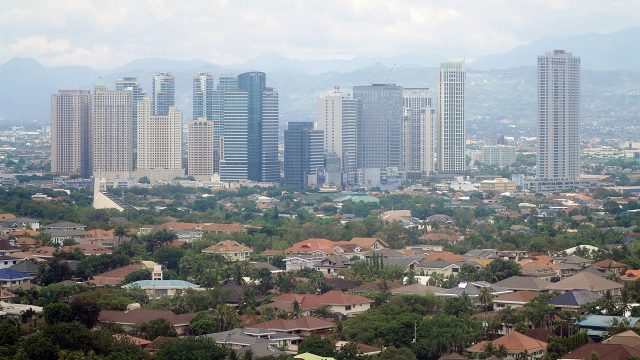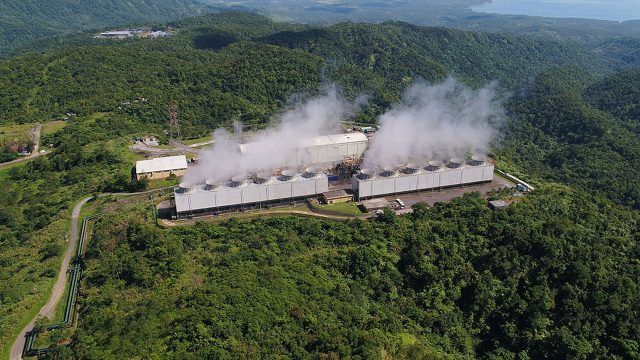GMA Network, Regal Entertainment seal partnership
GMA AND REGAL have partnered on a telemovie collaboration, Regal Studio Presents, beginning Sept. 11 on GMA-7. Regal Studio Presents is a weekly TV anthology that features stories starring various GMA artists. The two companies are also developing a variety of content to air across GMA channels. On GTV, viewers can catch Regal classic movies via Regal Treasures every Friday afternoon. Meanwhile, Heart of Asia is set to bring the hit BL (Boys Love) series Ben X Jim starting Sept. 26. Apart from these, viewers looking for fresh content can expect new movie features from Regal to be shown on GMA’s various platforms in the years to come. For the pilot episode of Regal Studio Presents, Ken Chan and Sanya Lopez team up for the very first time in “That Thin Line Between,” a story of neighbors who are at odds with each other. Upcoming episodes will star Gabbi Garcia, Khalil Ramos, Sofia Pablo, and Allen Ansay.
Hoy, Love You Two on iWantTFC
JOROSS Gamboa and Roxanne Guinoo-Yap deal with the difficulties of having a stepfamily in the iWantTFC original series, Hoy, Love You Two, which streams on Sept. 11. They play newlywed couple Jules and Marge, who try to build a relationship with their step-kids and prove themselves worthy to their in-laws, all while dealing with their own issues as a couple. The romantic comedy is directed by Theodore “Ted” Boborol and will stream on the iWantTFC app (iOs and Android) and on iwanttfc.com. The series is free for all users in the Philippines and is available to premium subscribers outside the Philippines.
Good Vibes with Edu Season 2 opens with ‘plantitas’
THE SECOND season of Edu Manzano’s Metro Channel talk show, Good Vibes with Edu, premieres on Sept. 12, 8 p.m. For its season opener, the host invited celebrity “plantita” guests for a conversation on the benefits of plants during this pandemic and a helpful discussion on how they take care of their indoor and outdoor plants. Actress-model Aubrey Miles, award-winning TV host Daphne Oseña-Paez, news anchor Gretchen Fullido, and singer-TV host Karel Marquez will speak about their planting journey and share tips on gardening. Good Vibes with Edu is a half-hour talk show where Mr. Manzano connects with his guests virtually and engages them in lively casual conversations. The new season will air on Metro Channel on SKYcable channel 52 (SD) and channel 174 (HD), Cignal channel 69, and GSAT channel 70. Episodes will also be available to stream via iWantTFC and Metro.Style’s YouTube channel.
Grandparents’ Day at Shangri-La Plaza
CELEBRATE Grandparents’ Day with Shangri-La Plaza mall on Sept. 12 by finding the right gifts for them. Looking for home exercise equipment that can help keep their heart strong, enhance their mobility, and maintain a healthy weight? The Trax Ultra Slim Deluxe Treadmill or the Trax Cadence Stationary Bike 2.0 from Chris Sports are compact enough for any home. For a comfortable pair of sneakers that they can use whenever they work out or walk around, Dr. Kong has Orthoknit sneakers that offer a hard heel counter to stabilize the heel bone, arch support, and soft padding for shock absorption. From Rustan’s Home, make their Zoom calls and movie nights livelier with Bang & Olufsen. A bouquet of flowers and a handwritten letter will make grandparents feel special and loved, so get a bouquet of mixed-colored Dutch tulips from Holland Tulips and a heartfelt Hallmark card from National Bookstore. Shangri-La Plaza mall is open daily from 10 a.m. to 6 p.m. For inquiries, call 8-370-2597/98 or visit www.facebook.com/shangrilaplazaofficial.
Netflix to release Season 3 of Sex Education
IT’S A NEW year, Otis is having casual sex, Eric and Adam are official, and Jean has a baby on the way. Meanwhile, new headteacher Hope (played by Jemima Kirke) tries to return Moordale to a pillar of excellence, Aimee discovers feminism, Jackson gets a crush, and a lost voicemail still looms. All this is up — along with commitment animals, alien phenomena, vulva cupcakes, and much more of Madam Groff — in the third season of Sex Education. The eight-episode season premieres on Sept. 17 on Netflix. For more information, visit netflix.com/SexEducation.
Julia Baretto stars in TV5’s ‘Di Na Muli
JULIA Baretto returns to star in the TV series ‘Di Na Muli, alongside Marco Gumabao. Produced by Cignal and Sari-Sari Channel together with Viva Entertainment for TV5, ‘Di Na Muli tells the story of love found and lost, and moving forward in life without regrets. It is told through the eyes of Yanna, played by Ms. Baretto, a woman burdened with precognition. Her ability makes her aware of how life is so fleeting and how time can pass you by if you fail to value every moment. Mr. Gumabao plays Mico, the man who challenges Yanna’s perspective on love. ‘Di Na Muli premieres on Sept. 18, 8 p.m., on TV5, Sari Sari on Cignal TV Ch. 3 and SatLite Ch. 30, and on Live and On-Demand via Cignal Play app.
Miss Universe PHL appoints Lazada as voting platform
THE MISS Universe Philippines Organization is again partnering with Lazada as the official voting platform for the upcoming Miss Universe Philippines 2021 pageant. From Sept. 13 to 24, beauty pageant fans will once again be able to support their favorite finalists through the Fan Vote feature available exclusively on the Lazada app. The finalist who receives the most votes through the Fan Vote system on Lazada will earn a spot in the pageant’s Top 16. Fans can enter up to five free votes daily and can support their favorite finalist by casting votes multiple times a day during the voting period. Fans can choose to purchase more votes via the Voting Packages offered in the voting page. The Miss Universe Philippines 2021 Finals will be on Sept. 25. Vote can be cast through the Miss Universe Philippines voting page on the Lazada app/site: https://lzd.co/LazadaVoting.
Musical series Still moved to November
SET in a pandemic-struck music camp, Still puts the spotlight on young aspiring artists as they navigate through a period of isolation and struggle. Its Exclusive PreViu on Ticket2Me.net was set for Sept. 10, but because of delays due to recent lockdowns, the new release date has been moved to Nov. 12. Still is Viu’s first Filipino Original musical narrative series and will consist of eight episodes. The cast is headlined by Julie Anne San Jose and Christian Bautista, and they will be joined by Bituin Escalante and Gab Pangilinan. Still is presented by Viu Philippines and This Side Up, in collaboration with Arkeofilms, TheaterFansManila.com, Flip Music, and Black Box Collab. The PreViu tickets are now available for purchase at https://bit.ly/ViuStillSeries.
Clinton Kane releases new single
FOLLOWING his viral success on TikTok and other online music platforms, Clinton Kane has released his stripped-down pop ballad, “I Guess I’m in Love,” via Columbia Records and Sony Music. Detailing the winding journey and range of feelings that come with finally finding true love, the single is currently at No. 4 on Spotify Philippines charts, and has amassed nearly 23 million streams since its release on Aug. 20. The track is currently a mainstay on various local radio charts, ranking within the top 20 of Manila-based mainstream radio stations, RX 93. 1 and 99.5 Play FM. Over at TikTok, The Filipino-Norwegian star’s chart-topping track has been covered by Filipino artists, including SB19’s Pablo, whose rendition garnered close to 200,000 views in less than an hour. “I Guess I’m in Love” is available on all digital music platforms worldwide via Clinton Kane – I GUESS I’M IN LOVE (lnk.to).
Kyle Juliano, Sam Atkins collaborate on single
TWO homegrown talents from Dumaguete, Kyle Juliano and Sam Akins, are bringing back slow 2000-style R&B melody with their first collaboration, “I Need You Now.” The song talks about an unhealthy attachment and dependency on a relationship that doesn’t bring value in one’s life anymore. “Kyle played a four-chord progression on guitar that you hear throughout the song, and we wrote that together with Stefani (Kyle’s cousin),” Mr. Atkins said in a statement. These show their flair in uniting music and lyrics with their much-awaited record. “I Need You Now” is available to stream on Spotify and Apple Music.

















